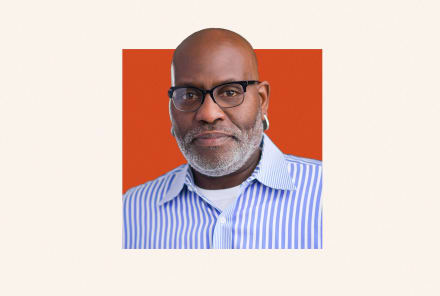Advertisement
I’ve Studied Trauma For 50+ Years: Here’s 3 Things You Should Know About Healing

You’ve probably heard that trauma is stored in the body—but if that’s true, how do we work through it?
According to Peter Levine, who holds a double PhD in psychology and biophysics, healing trauma involves more than just mindfulness or talk therapy. It requires tapping into the physical sensations, hence his focus on mind-body healing.
Levine has studied trauma for over 50 years and has written a handful of books about his mind-body healing approach, the newest of which outlines his personal growth story, An Autobiography of Trauma: A Healing Journey.
To come, three of the many lessons Levine has learned about true trauma healing, straight from our fascinating conversation on the latest episode of the mindbodygreen podcast.
Trauma is not just stored in the mind
Levine coined the Somatic Experiencing method to heal trauma, which entails focusing on how the body stores trauma and, thus, how to release it through bodywork. But first, you’ll have to find out how trauma shows up in your body because everyone is different.
Oftentimes, you may not know how trauma affects you until you’re in a situation where it’s triggered. For example, if you’re in a conversation with someone, otherwise unprovoked, and you get angry, your gut tightens up, or your shoulders become tense, this could be a replay of trauma—"Of things the body has done many, many years ago, but it lies dormant, ready to be activated,” Levine says.
You may ask yourself, “Where is this coming from?” Perhaps the conversation or the person you’re talking to reminds your subconscious of an experience that was traumatic.
Even without intentionally responding to that reminder, your body and subconscious may be on high alert, causing you to respond grander than you would otherwise.
Unexplained emotional reactions are just one of the many signs of unaddressed trauma in the body—but one worth taking note of and exploring when it takes place.
There’s great power in active imagination
During our conversation, Levine brought up a fascinating personal story about active imagination in which he had conversations in his mind with a figure who wasn’t standing in front of him in real life, but these conversations delivered great healing lessons.
We’re used to seeing active imagination play out in children—what some may call “imaginary friends,” but it’s quite powerful for adults to be able to tap into an open dialogue in their imagination—be it with a past family member, friend, or mentor.
When you have these open conversations, you’re able to dive deeper into your mind because of it, which may help you uncover and work through unresolved trauma.
“It's a way of the unconscious and conscious minds to meet each other,” Levine says.
Want the latest and greatest from leading well-being experts? Subscribe on Apple Podcasts.
Healed people heal people
“With the right tools, trauma doesn't have to rule,” Levine declares. One important tool in the toolbox is the help of a guide—be it a therapist, healer, or a close and trusted friend.
But before committing to the journey with a guide, you should be sure they’ve already gone through their own healing journey.
“It’s so important, at least initially, to get some guidance from someone who’s experienced and who’s done their own healing work,” he says, adding, “I would never work with someone who hasn’t done their own healing work—it’s just likely to be either ineffective or re-traumatizing.”
Now, this doesn’t mean you can’t confide in a close friend who's on their own healing journey for comfort and shared conversation. But when it comes to putting trust in a guide, Levine strongly suggests finding someone who’s walked this path on their own before so they can guide you with confidence and experience.
The takeaway
Levine’s extensive knowledge of trauma comes from both lived experience and his work as a psychologist.
He emphasizes that trauma is stored in the body as well as the mind, that active imagination holds great healing power, and that trauma healing guides must have their own healing experience.
To learn more about his mind-body approach, tune into the latest episode on Apple Podcasts.
Watch Next
Enjoy some of our favorite clips from classes
Enjoy some of our favorite clips from classes
What Is Meditation?
Mindfulness/Spirituality | Light Watkins
Box Breathing
Mindfulness/Spirituality | Gwen Dittmar
What Breathwork Can Address
Mindfulness/Spirituality | Gwen Dittmar
The 8 Limbs of Yoga - What is Asana?
Yoga | Caley Alyssa
Two Standing Postures to Open Up Tight Hips
Yoga | Caley Alyssa
How Plants Can Optimize Athletic Performance
Nutrition | Rich Roll
What to Eat Before a Workout
Nutrition | Rich Roll
How Ayurveda Helps Us Navigate Modern Life
Nutrition | Sahara Rose
Messages About Love & Relationships
Love & Relationships | Esther Perel
Love Languages
Love & Relationships | Esther Perel
What Is Meditation?
Box Breathing
What Breathwork Can Address
The 8 Limbs of Yoga - What is Asana?
Two Standing Postures to Open Up Tight Hips
How Plants Can Optimize Athletic Performance
What to Eat Before a Workout
How Ayurveda Helps Us Navigate Modern Life
Messages About Love & Relationships
Love Languages
Advertisement

This Underconsumed Nutrient Helps Fight Gum Inflammation, Study Shows
Molly Knudsen, M.S., RDN

Research Shows Cognitive Longevity Depends On These 3 Critical Vitamins
Molly Knudsen, M.S., RDN

This Underconsumed Nutrient Helps Fight Gum Inflammation, Study Shows
Molly Knudsen, M.S., RDN

This Underconsumed Nutrient Helps Fight Gum Inflammation, Study Shows
Molly Knudsen, M.S., RDN

Research Shows Cognitive Longevity Depends On These 3 Critical Vitamins
Molly Knudsen, M.S., RDN

This Underconsumed Nutrient Helps Fight Gum Inflammation, Study Shows
Molly Knudsen, M.S., RDN











